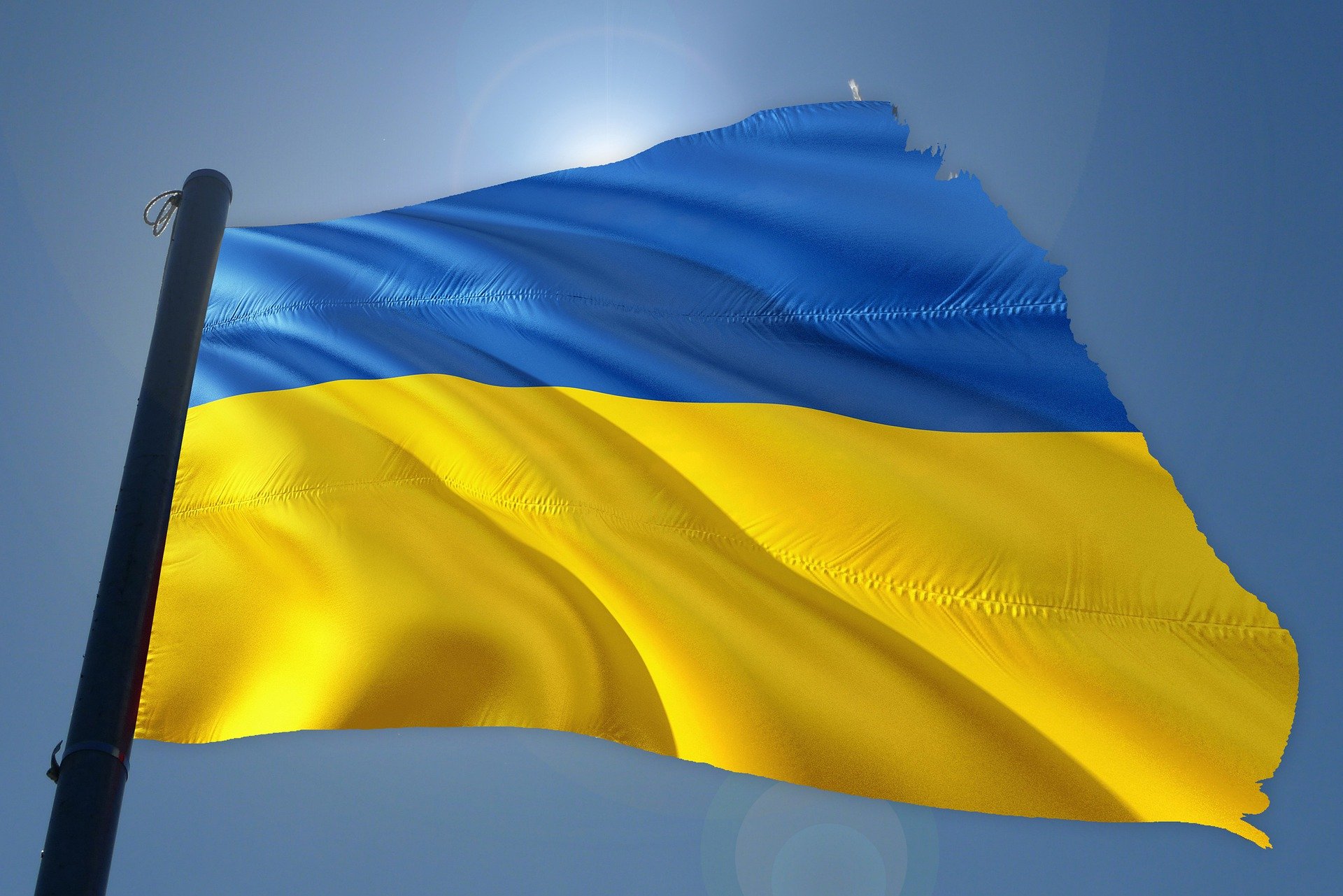
March 25, 2022, by Brigitte Nerlich
Seeing the world as Ukraine
Humans have a profound ability to see something as something else. This enables us to create metaphors, mind and, in my view, consciousness. As the psychologist and philosopher of science Rom Harré once said: “You need an ‘as if’ to look at the world; you need an ‘as if’ to explain the world.” (p.c.)
When the pandemic came in 2020, we saw the world in terms of ‘covid’ and created millions of verbal and visual images in order to cope with this new reality. This year, the world has changed again – for people in Ukraine in very profound ways, through an unprovoked war that brought with it untold death and destruction. People who don’t live in Ukraine have become deeply aware of the fragility of peace, life and normality. While for Ukrainians the change from peace to war is a lived experience, a terrible reality, for people around the world, this change has brought with it a change in the way many now see the reality around them.
 According to John Middleton Murry (1931) metaphor is “the instinctive and necessary act of the mind exploring reality and ordering experience”. Seeing something as something else is central to that process of exploring and ordering. Over the last few weeks, people have come to know the Ukrainian flag and its colour, blue and yellow/gold, as a symbol of a country haunted by war and as a metaphor for its suffering. In this post I want to talk about the sudden and visceral way in which people around the world have begun to explore reality and order experience through a new lens: the colours of the Ukrainian flag.
According to John Middleton Murry (1931) metaphor is “the instinctive and necessary act of the mind exploring reality and ordering experience”. Seeing something as something else is central to that process of exploring and ordering. Over the last few weeks, people have come to know the Ukrainian flag and its colour, blue and yellow/gold, as a symbol of a country haunted by war and as a metaphor for its suffering. In this post I want to talk about the sudden and visceral way in which people around the world have begun to explore reality and order experience through a new lens: the colours of the Ukrainian flag.
Seeing the world in new colours
For example, when walking through the streets of Nottingham, I saw an old dilapidated skip in front of a house (see featured image), and I thought immediately about Ukraine, as the skip’s sides were painted blue and yellow. I am, of course, not the only one ordering reality in this new way. There are intentional acts of making us see the world through the lens of the Ukrainian flag alongside those, like the skip, that are unintentional, with some ambiguity in between.
Early on in the war, many buildings flew the Ukrainian flag to show solidarity with a country that was being invaded by an aggressive superpower. Soon, many state buildings, such as the Brandenburg Gate, world landmarks, such as the Eiffel Tower, local landmarks, such as the Wallace Tower in Stirling or the Kelpies in Scotland, were illuminated in blue and yellow, as was, of course, our local Wollaton Hall, and many many more.
Projecting the colours of Ukraine onto buildings showed support and solidarity with the Ukrainian people, but it could also be used as a subversive act, as when the colours were projected on the Russian Embassy in Lisbon or in London and, again, many more. On a more mundane level, one couple in Cambridgeshire famously painted their house blue and yellow.
The blue and gold colours were also used in art, such as in street art, but also super-imposed on classic art, like this Rothko, in a rather creative charity appeal.
In the context of Holi, the Hindu festival of spring, colours and love, people preferentially used blue and yellow/gold. Some people, such as Anneka Rice, rediscovered the colours of Ukraine in their own past lives and rejoiced about that, reposting what they once wore on Twitter.
 Gradually people began to see the symbol of blue and yellow in objects not designed for display, for example when looking at a beach or at a skip, for example. Now it has become almost impossible to look at, say, forsythia or a sunflower field against a blue sky without seeing ‘Ukraine’. In the latter case, the seeing something as something else is even more pronounced, as sunflowers are another symbol of Ukraine.
Gradually people began to see the symbol of blue and yellow in objects not designed for display, for example when looking at a beach or at a skip, for example. Now it has become almost impossible to look at, say, forsythia or a sunflower field against a blue sky without seeing ‘Ukraine’. In the latter case, the seeing something as something else is even more pronounced, as sunflowers are another symbol of Ukraine.
Sometimes, we can’t help seeing what people wear as ‘Ukraine’ (via a chain of metonymies: flag – nation; colours – flag; colours – nation). But we can’t know for sure what the intentions of the wearers are. When three astronauts arrived at the International Space Station, the old inhabitants of the ISS were startled, as the three men looked like ‘Ukraine’, although it was not clear whether this was intentional or, more likely, not. When Nazanin Zaghari-Ratcliffe was released from Iran after six years of imprisonment, she wore a yellow dress and blue scarf on the plane home, and a few days later, at a press conference, a yellow coat and blue scarf, a colour choice that was widely interpreted as support for Ukraine.
The social dimension of seeing something as something else
When thinking about metaphors, Ivor Armstrong Richards, the author of the famous book Philosophy of Rhetoric, wrote in 1936: “The mind is a connecting organ, it works only by connecting and it can connect any two things in an indefinitely large number of different ways. Which of these ways it chooses is settled by reference to some larger whole or aim, and, though we may not discover its aim, the mind is never aimless.”
While it is true to say that the mind is a connecting organ, one should not forget that we, as humans are also connecting people. Only by connecting as people can the mind really work as a connecting organ. When seeing something as something else in the shape of metaphors and metonymies and by mapping, for example, flag colours onto reality, we establish mental connections. But establishing such connections is also a social process and metaphors and symbols are also social connectors. They reach out to other minds and can bring people together or pull them apart.
Good metaphors expand the mind, fire up the imagination and help create new understandings of the world and of others, for good or for ill. Metaphors and metonymies create cognitive and possibly neurological bonds between conceptual or mental domains, but they also create social bonds – in our case, perhaps, between the Ukrainian people and the citizens of the world.
An early Soviet/Russian philosopher of language and society, Valentin Nikolaevich Voloshinov wrote in 1929: “Signs emerge… only in the process of interaction between one individual consciousness and another. And the individual consciousness itself is filled with signs. Consciousness becomes consciousness only once it has been filled with ideological (semiotic) content, consequently, only in the process of social interaction.” That is why it is so important to keep an eye on the political potential, for good or for ill, of signs and symbols, from flags and their colours, to letters, such as Z.
Having said all that, the images of death and destruction flooding our screens now, are gradually casting a dark shadow over the colours of hope.
No comments yet, fill out a comment to be the first

Leave a Reply